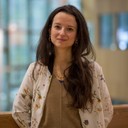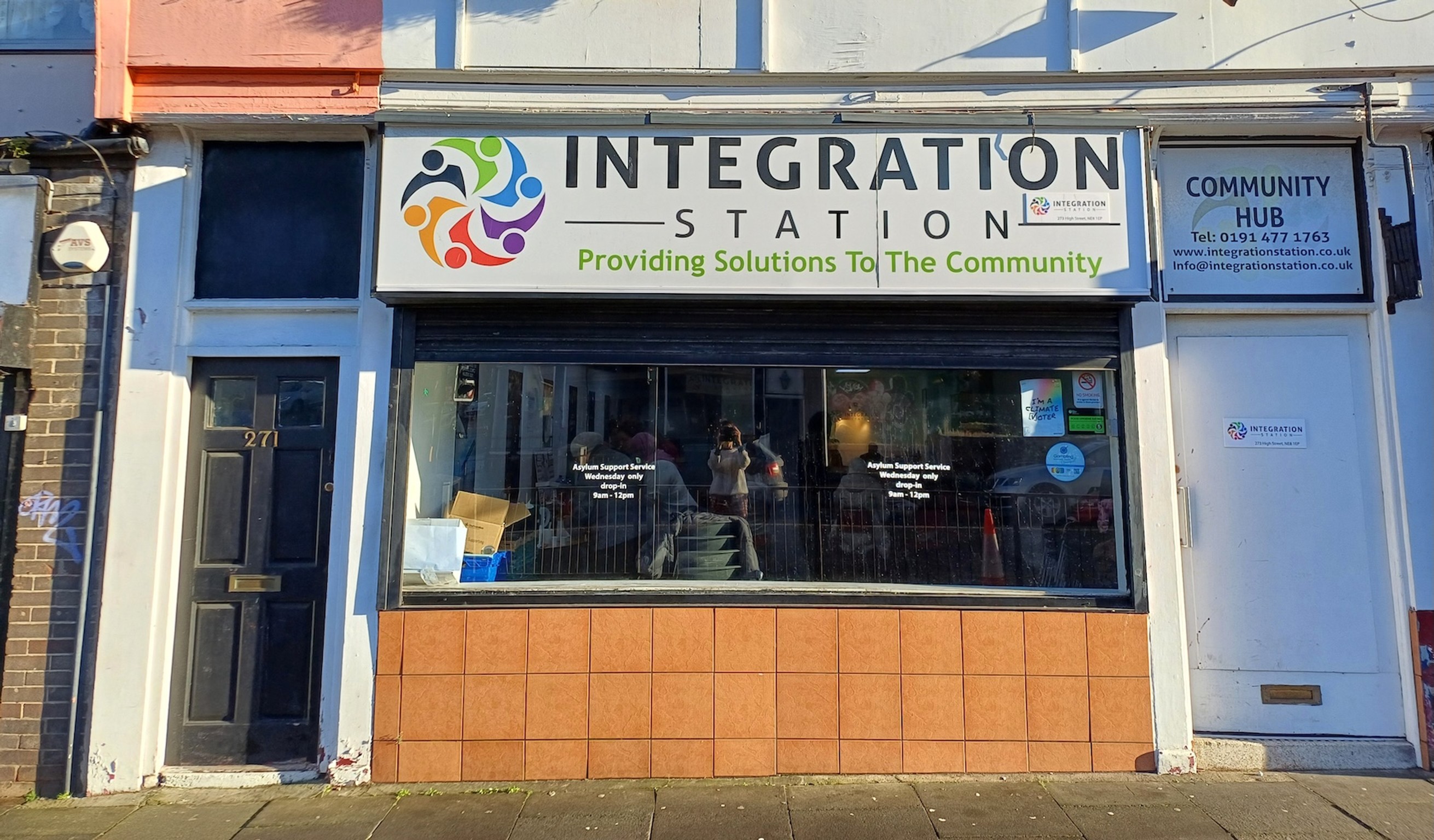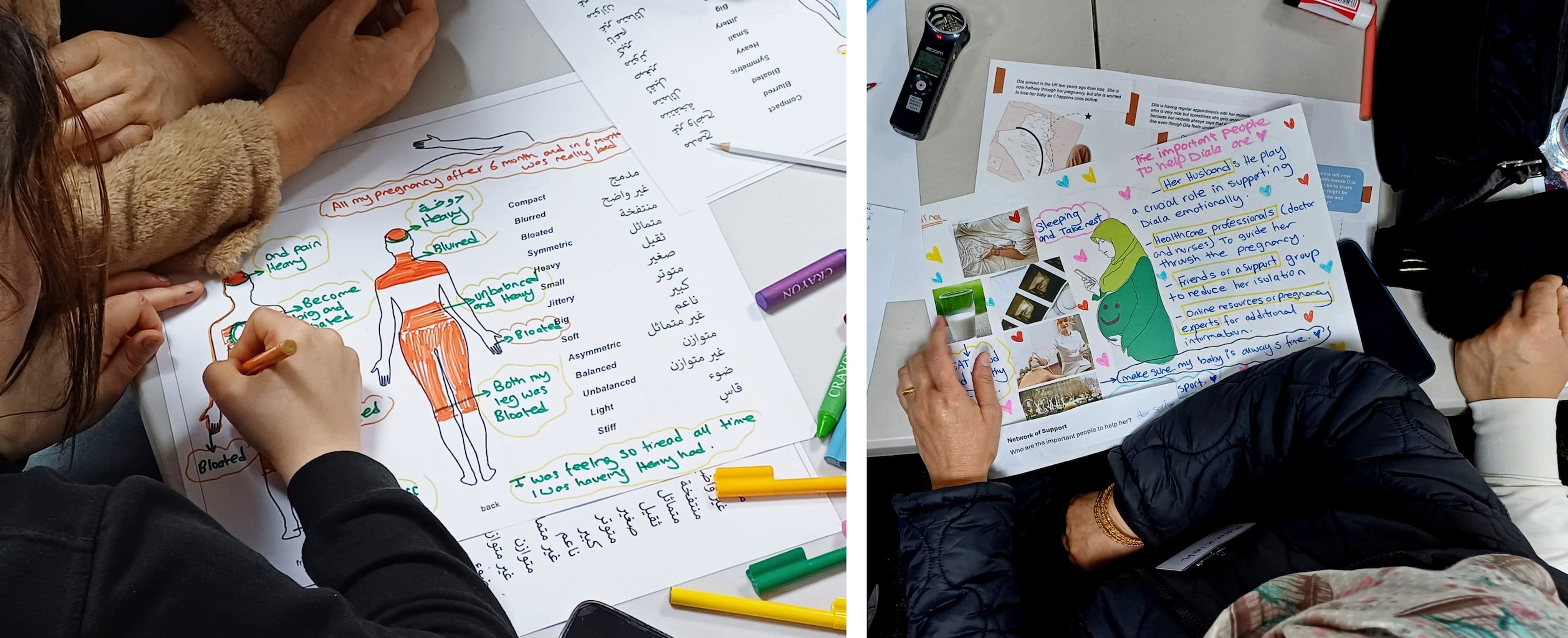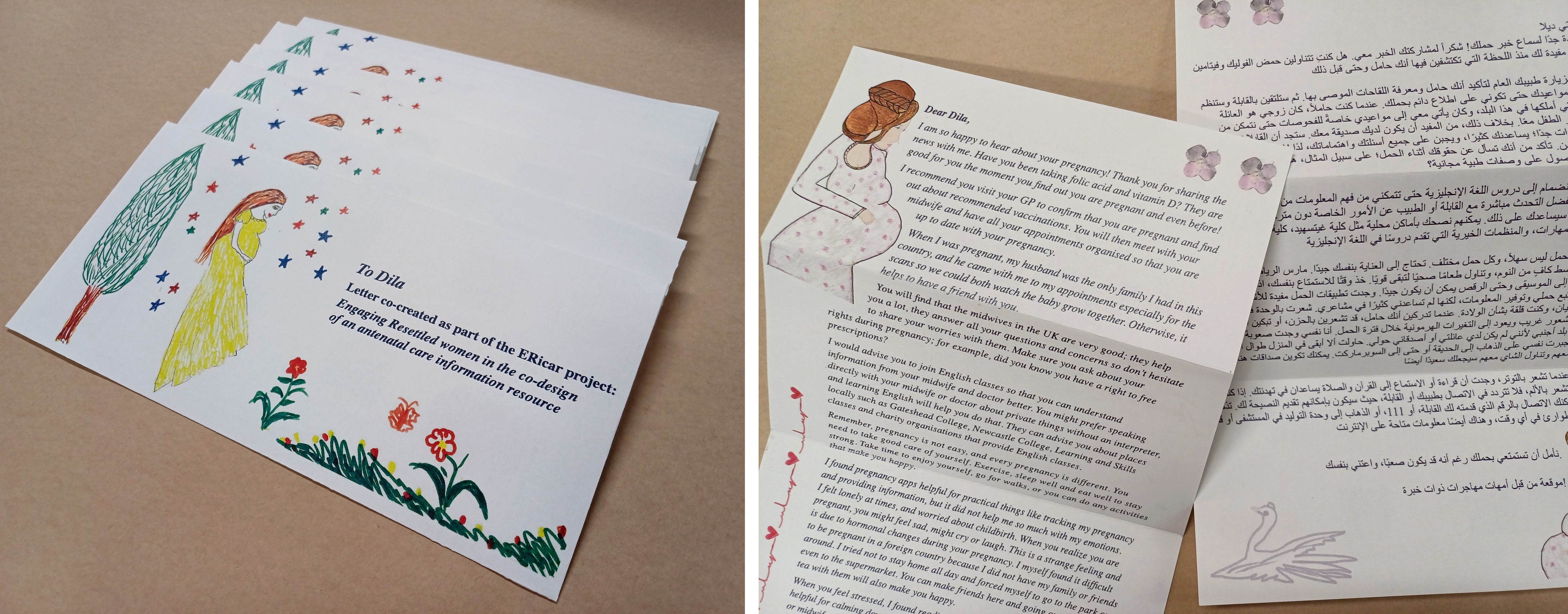
ERicar2: Engaging Resettled migrant women in the co-creation of an antenatal care information resource
Digital Health

Collaborators Integration Station (CIC), arabic-speaking women
Abstract
ERicar2 is a follow-up project from ERicar1. It explores women’s needs for antenatal care information through co-creation.
Method
Through workshops, the process of co-creation was scaffolded by design-based methods, including the making of animation using a character-driven scenario.
Takeaways
We co-created an antenatal care information resource using creative means for communicating important information to women during their pregnancy journey.
ERicar was an interdisciplinary project that combined participatory design-led inquiry together with applied health research using qualitative methods.
This research was a collaboration between researchers at Newcastle University and a community interest company (CIC) in Gateshead, Integration Station. Dr Caroline Claisse (Open Lab) and Dr Mabel Lie (Population Health Sciences Institute) co-led the project, which involved a series of ten workshops with ten Arabic-speaking migrant mothers. Participants taking part in the workshops were mostly from Kurdish heritage and arrived in the UK as refugees between 2010-2019. The overall aim of the project was to explore women’s needs around antenatal care through co-creation and understand what information and support was needed for their community.
The project builds on previous work conducted with Roma women who engaged in co-creating a zine (small DIY booklet) to communicate information for pregnancy support for other women in their community. Supported by the ESRC Impact Acceleration Account (IAA) Strategic Fund and with additional funding from the Centre for Digital Citizens, we replicated our co-creation approach used with Roma women and worked closely with the CIC and an experienced community coordinator to engage Arabic-speaking mothers from a range of ages and backgrounds.
The project was supported by our project advisory group consisting of Gayle Cain (Co-Chair, Gateshead Maternity Voices Partnership and ART Network Manager, Newcastle University), Debbie Corbett (Public Health Lead Midwife, Maternity Unit, Queen Elizabeth Hospital, Gateshead), and Dr Clara Crivellaro, (Reader in Digital Social Justice, School of Computing, Newcastle University).

What did we do?
Ten workshops were conducted, each lasting up to two hours, over a period of eleven weeks. The workshops were structured to explore women’s pregnancy journeys as well as the types of information and support which participants found important for their community. A de-briefing session was organised in January to reflect on the workshops and celebrate the end of the project. Overall, the women valued the opportunity to meet and share their experiences. They learned from each other and some of them appreciated the chance to improve their English.

Why is this research needed?
Migrant women, especially those newly settled in the UK experience inequalities in health and wellbeing outcomes during pregnancy and childbirth, but research in these emerging communities is limited. Arab-speaking women, in this case, mostly refugees from Syria, Iraq and Iran, have different experiences of healthcare in their original countries which influence their engagement with the NHS. Like other migrant women new to the country, they are often unaccustomed to the way health services work in the UK. Language, religious and cultural barriers, as well as the lack of family and community supports that they were used to, contribute to mothers’ anxieties during pregnancy. Through understanding their needs and preferences regarding existing antenatal care information, this study aimed to prototype a co-created antenatal care community information resource with a group of these women.
Design output
During the workshops, creative and visual-based methods were used; for instance, we used body mapping and journey mapping in addition to creating a fictional character named Dila. The final output from the project was a paper-based letter conveying the women’s messages of advice and support to Dila who was experiencing her first pregnancy in the UK. The letter included artworks from the women and reflected key narratives shared at the workshops. QR codes to internet sites for pregnancy support were added to the letter, representing the topics and information women found most valuable. At the debriefing session, the potential for an audio-visual version of the letter was discussed. Two women were later invited to record their voices for creating an audio-visual version of the letter in both English and Arabic languages. Overall, participants were happy with the ‘Letter to Dila’, which they thought was more personal than a leaflet, and was just the right length. They could share it easily with other women, and it was helpful having the QR codes to access select resources. The women agreed to include their signatures to the letter, as an indication of their combined effort in co-creating the letter.

Future work
Findings from the workshops indicated that our participants were confident in using digital tools to seek information with Google Translate, photos and videos used to support communication. For instance, they often turned to Arabic YouTube videos and pregnancy apps to support their pregnancies, and some participants showed us how they would use AI tools to seek information, create content to share with others, and support administrative tasks. Next, we see an opportunity to further explore how migrant mothers might appropriate such technologies for making sense of their experience and navigating motherhood whilst exploring wider concerns around data privacy and digital literacy.
When thinking about community-based information resources, we explored more creative and informal formats in both ERicar projects. This included the creation of a zine, a letter and an audio-visual story depicted in the ‘Letter to Dila’. Across both projects, we used storytelling with the help of a fictional character, which we found helped women engage and relate to the topic. In future work, we see the potential for developing interactive tools to support communities to generate their own resources and consider how content could be tailored to different cultures and individuals’ needs or journey.
Events and impact
We conducted one feedback session with 16 women at Integration Station who found the letter interesting as a resource and suggested it could be shared more widely via social media with other women from their community. We also sought additional funding to test the co-created resource ‘Letter to Dila’ with another group of Arabic-speakers from North Africa. One half-day workshop will be conducted this summer in partnership with The Angelou Centre in Newcastle. We are also hoping to continue our long-term collaboration with Integration Station by conducting more engagement with other groups of women. We are currently applying for the ESRC IAA Strengthening Partnerships Fund hoping to receive funding to continue our exploration with Farsi-speaking women and begin engagement with other community groups.
Findings from the project were presented at the QualSIG (Qualitative Special Interest Group) symposium where we introduced our approach: ‘Bricolage and adaptability – responsive co-creation workshops with migrant mothers’. In September, we will be sharing insights from ERicar2 via a webinar at a Lunch & Learn session on Boost – a community hub for anyone with an interest in driving forward change in health and care with a focus on personalised care.